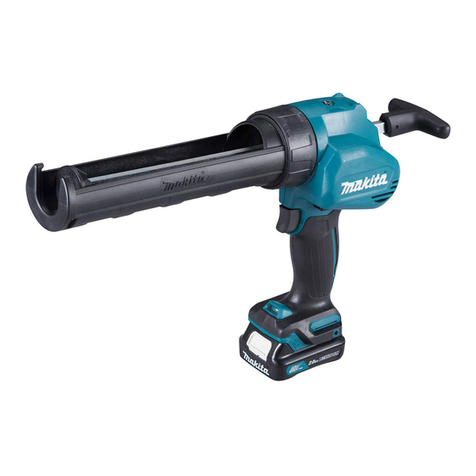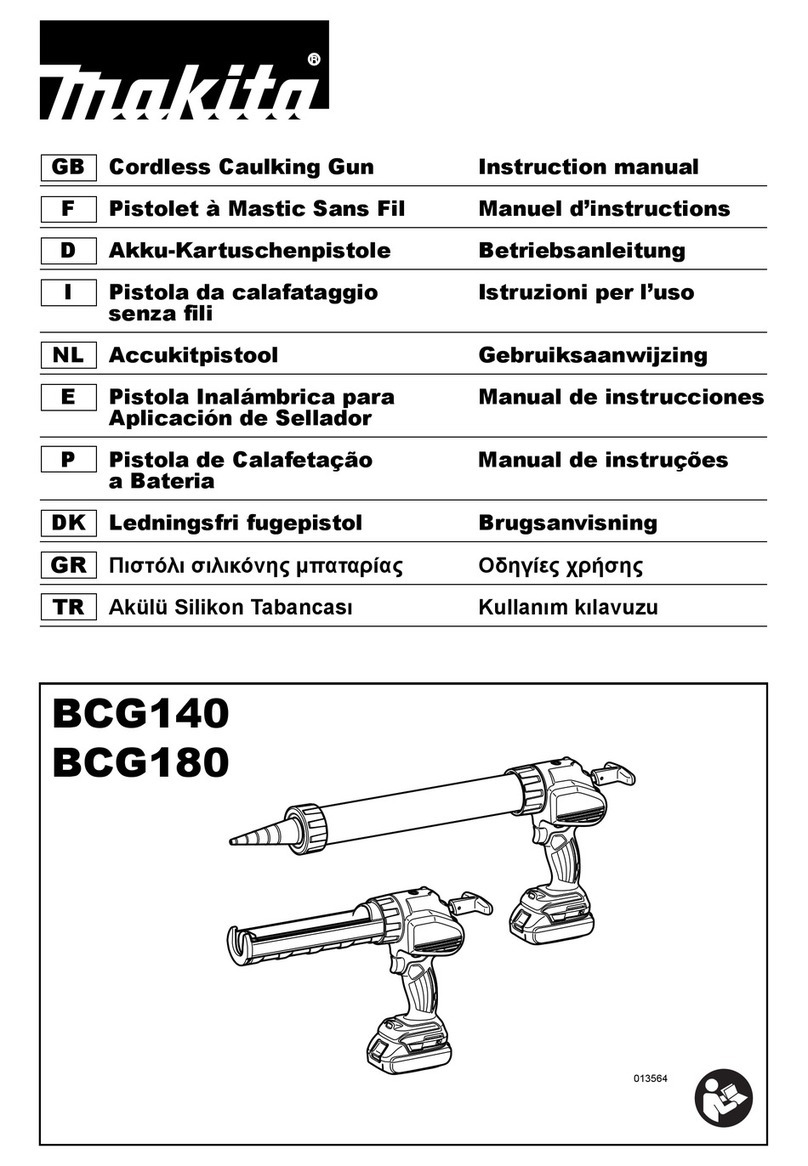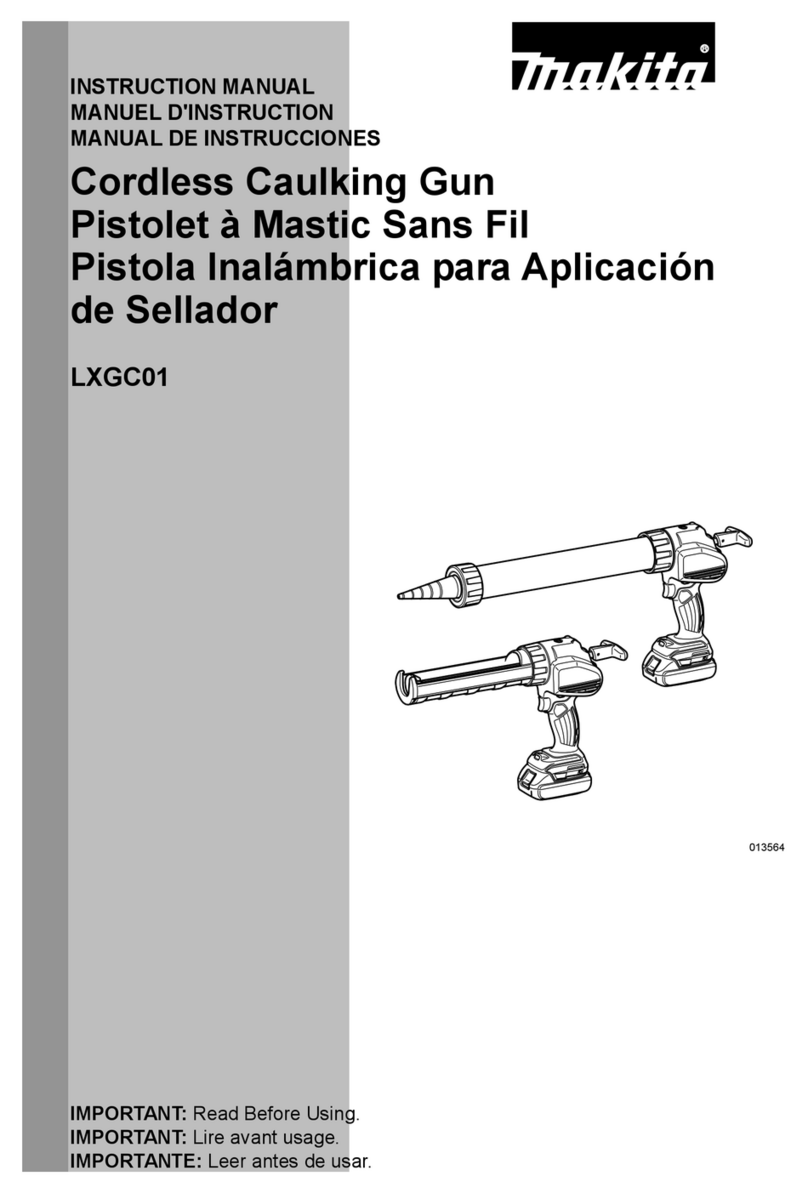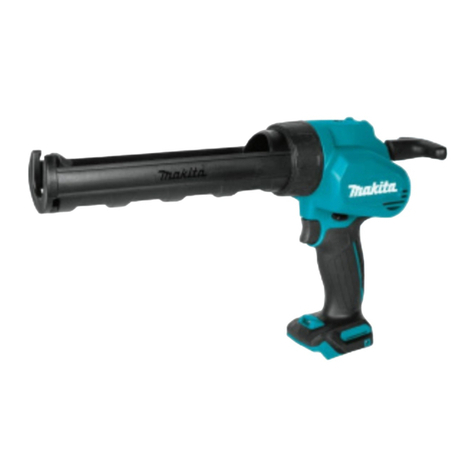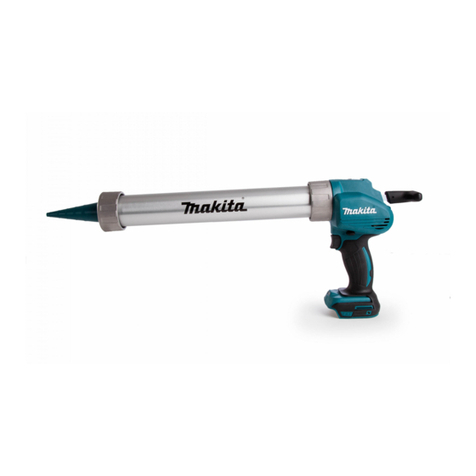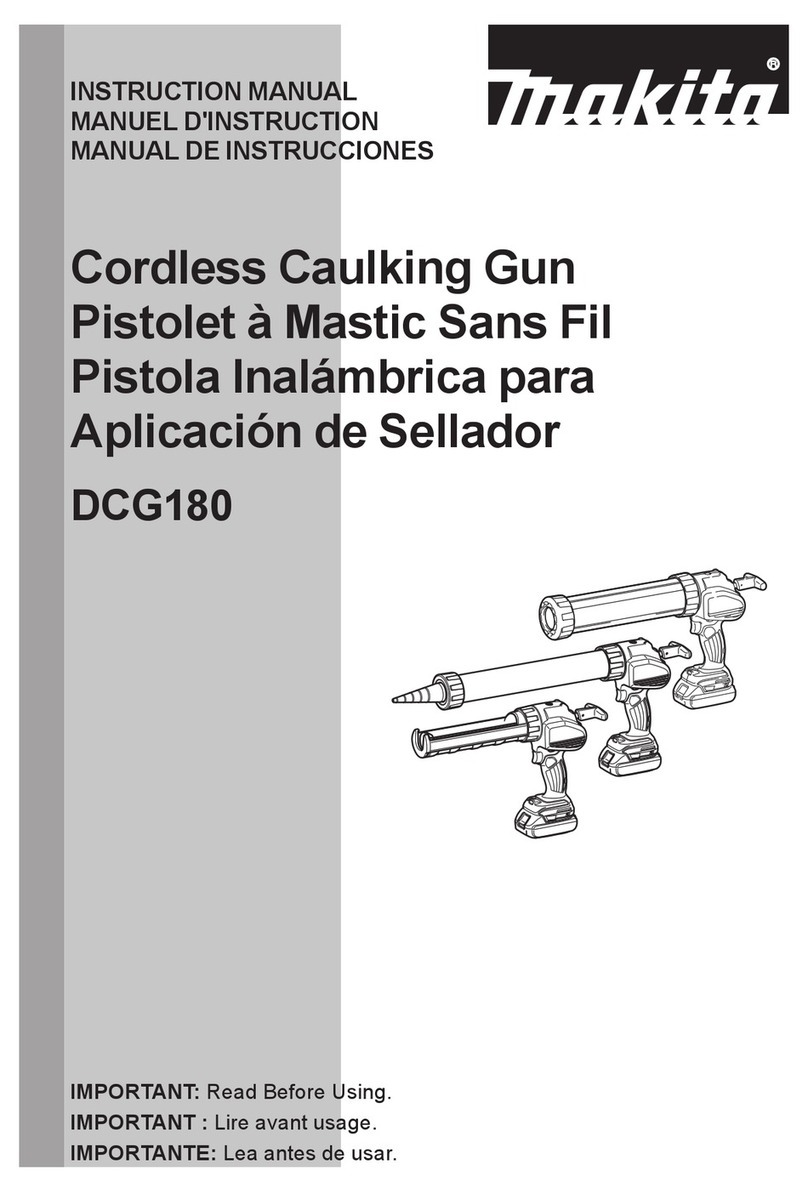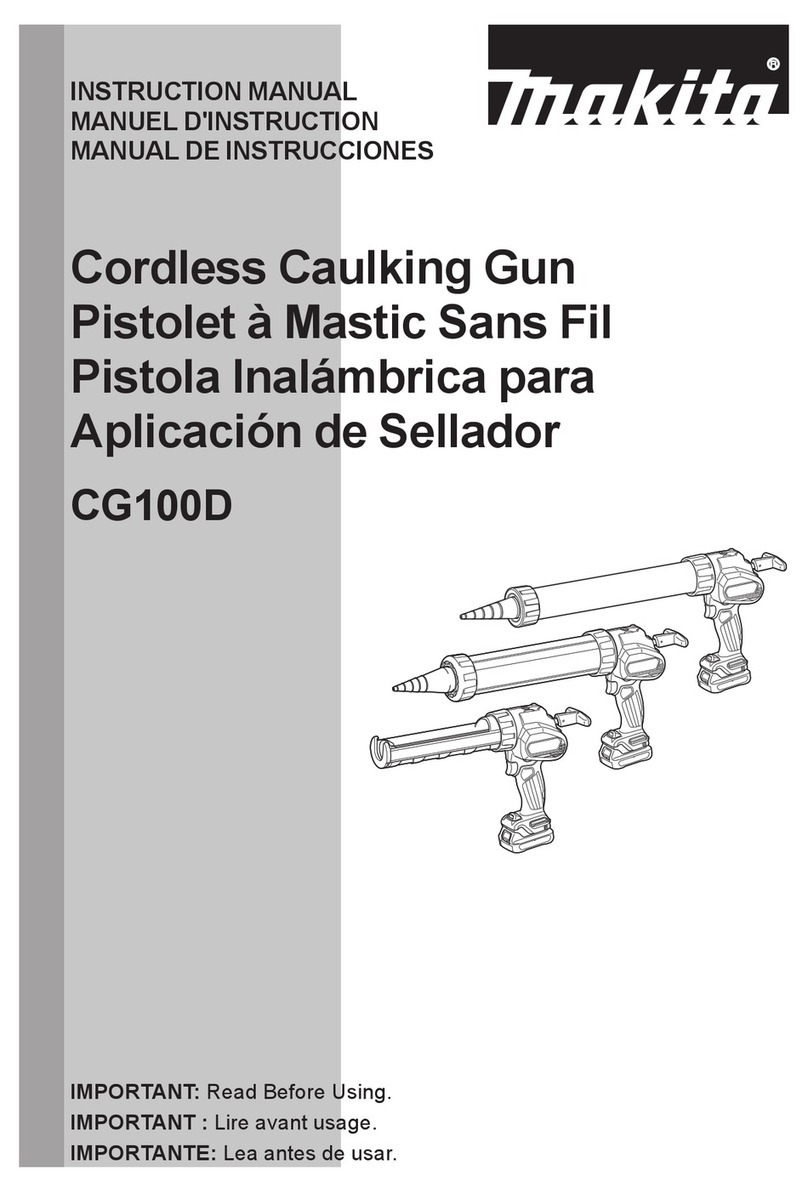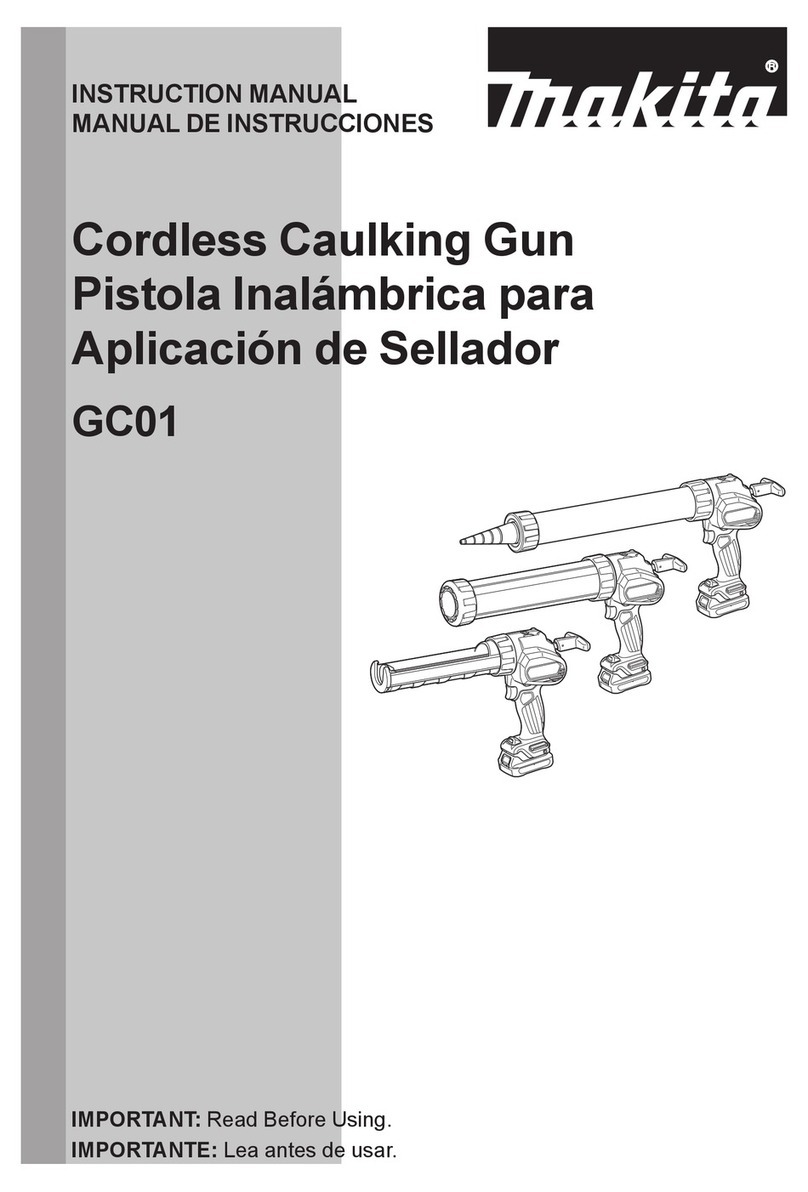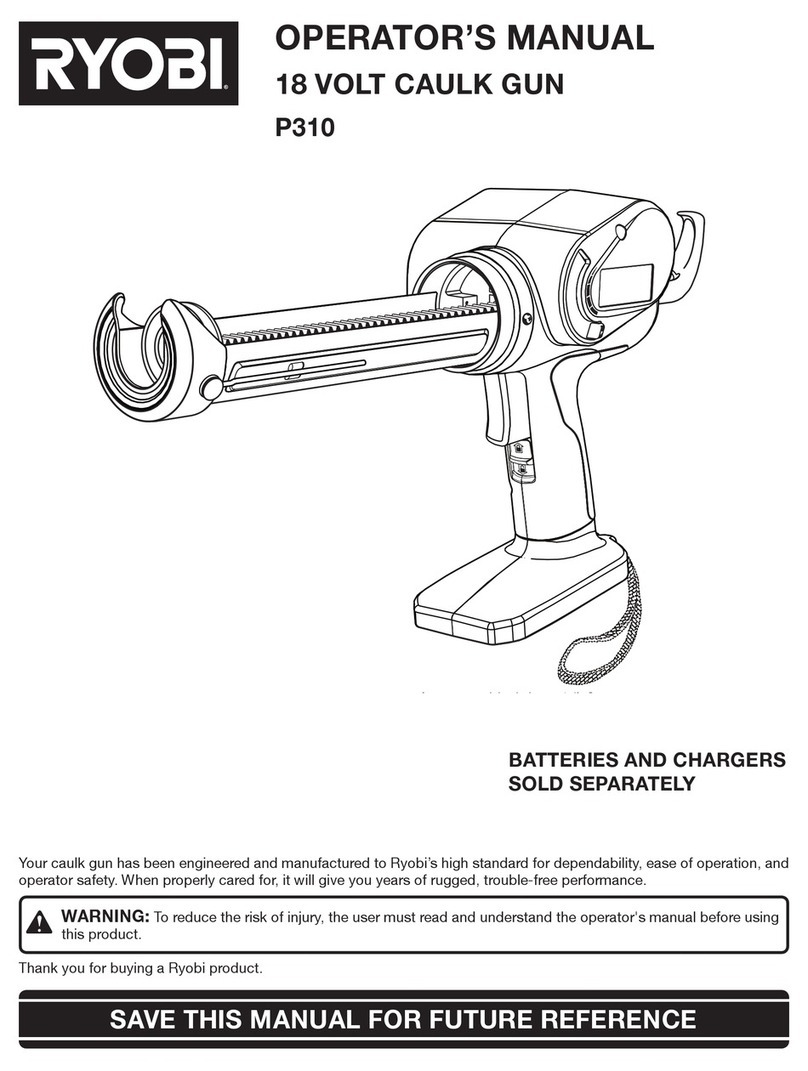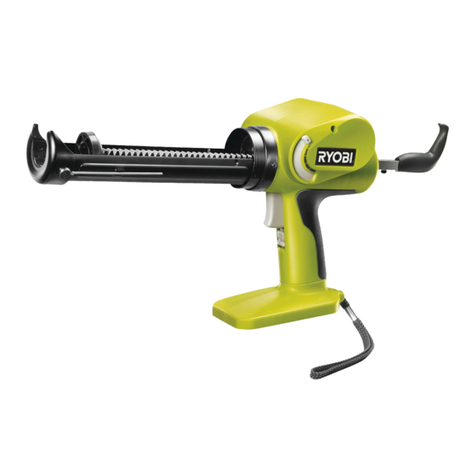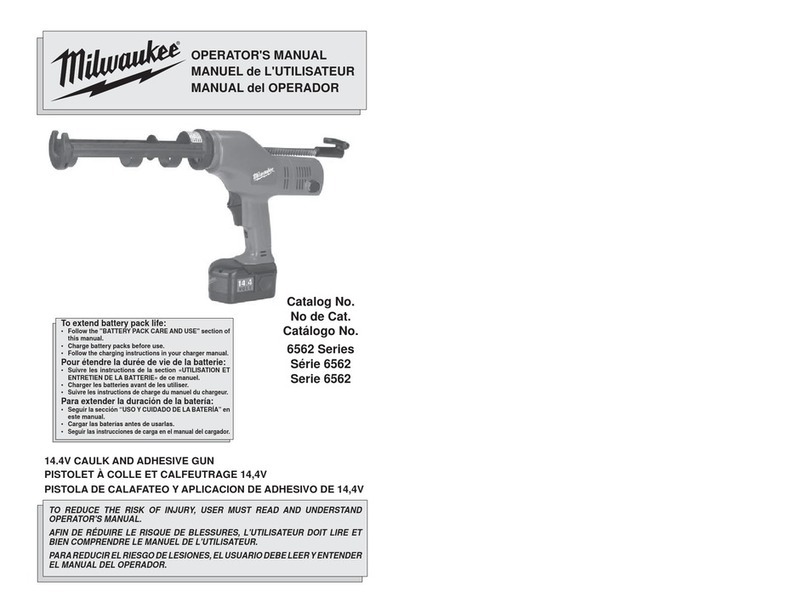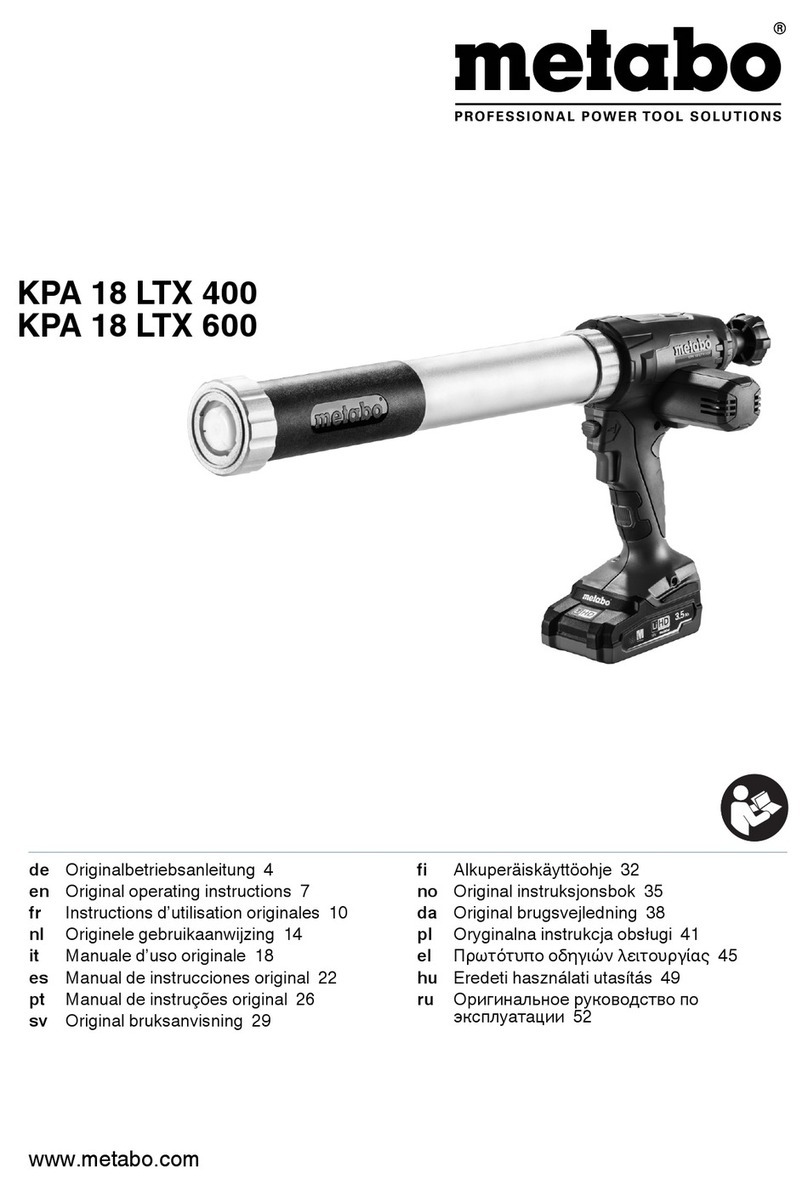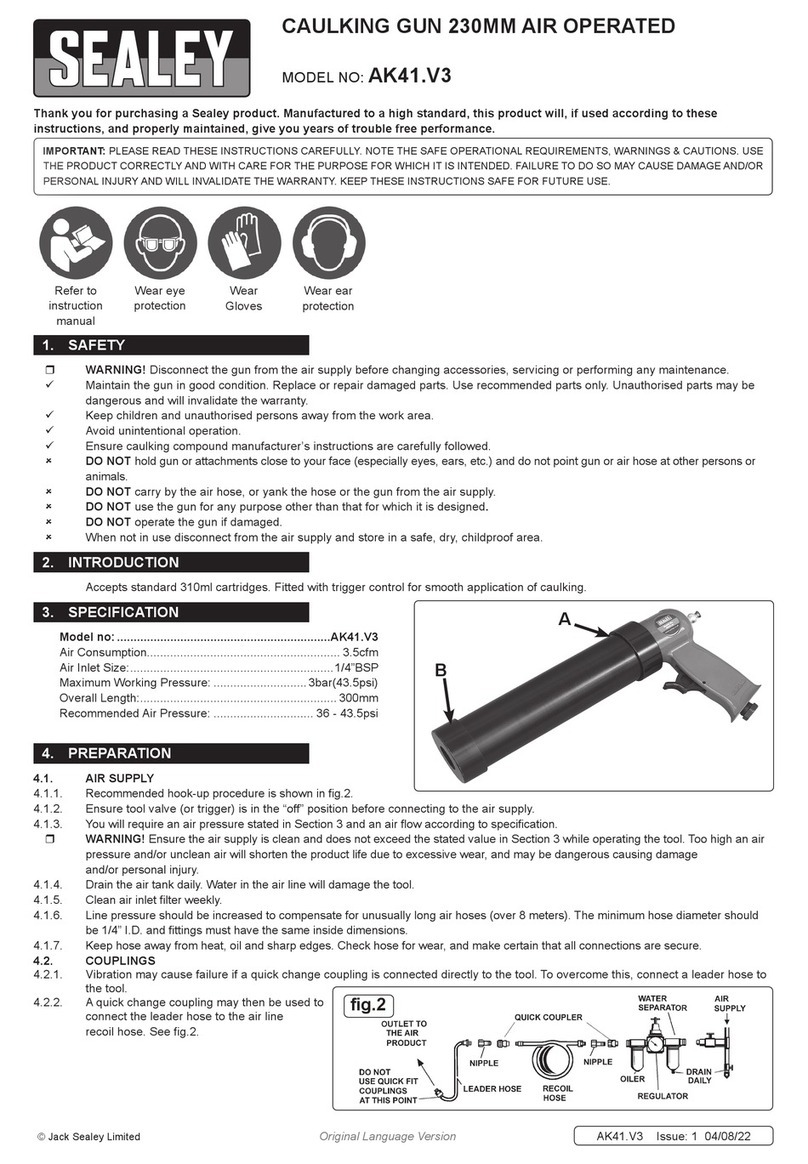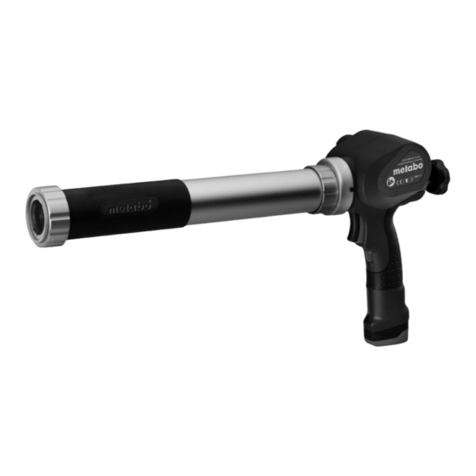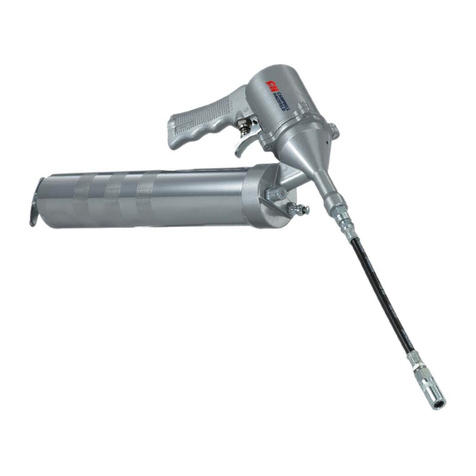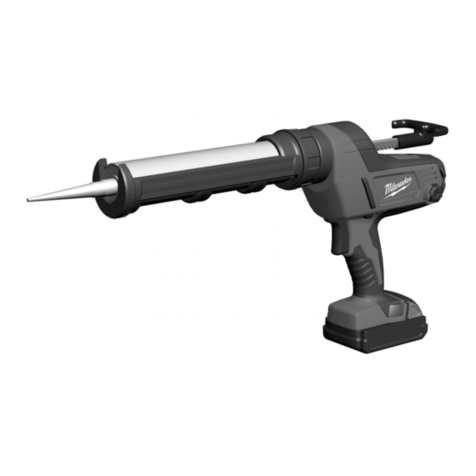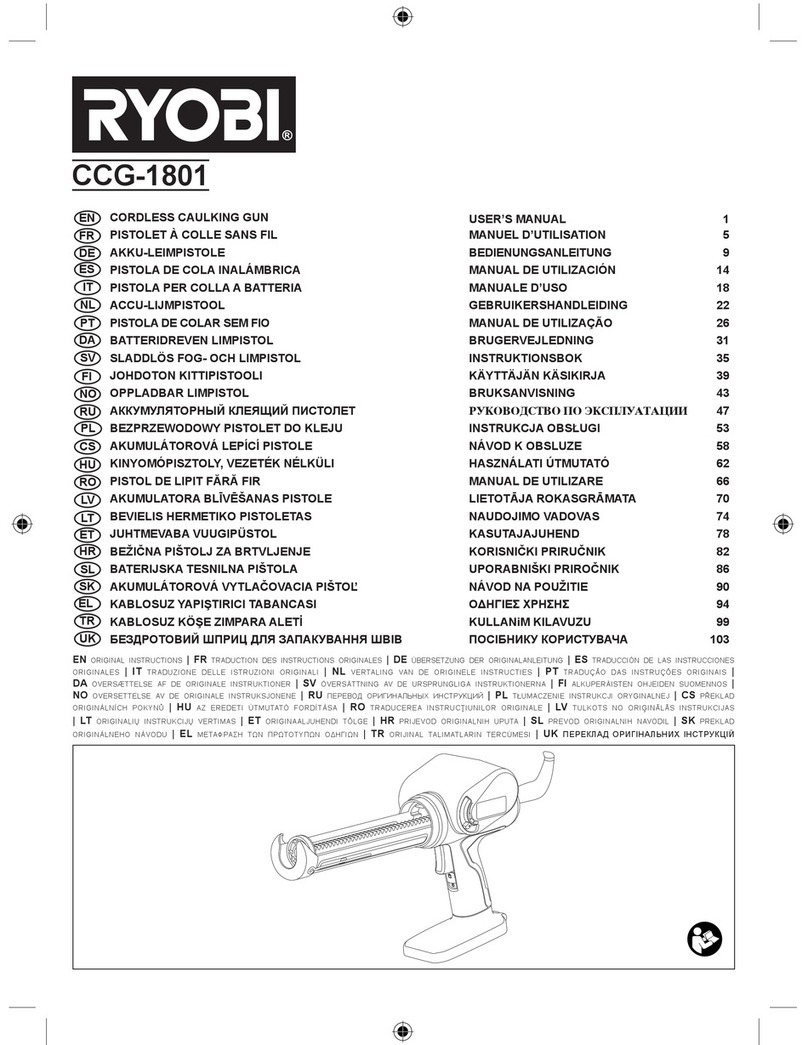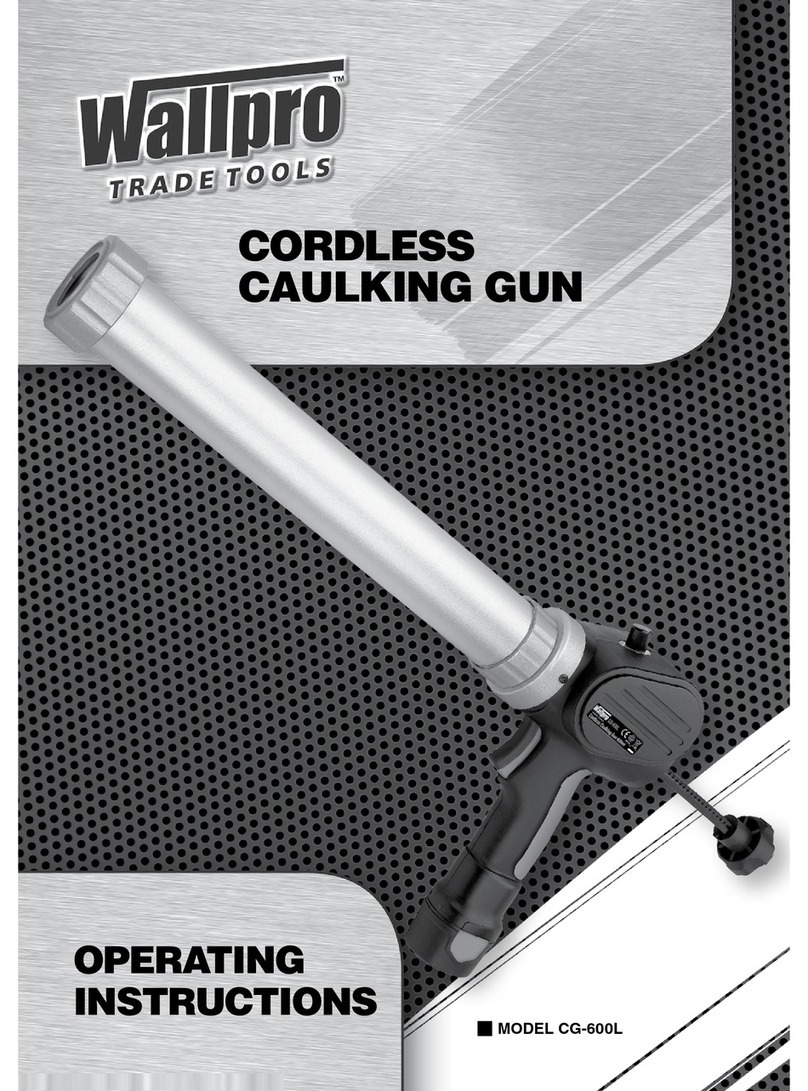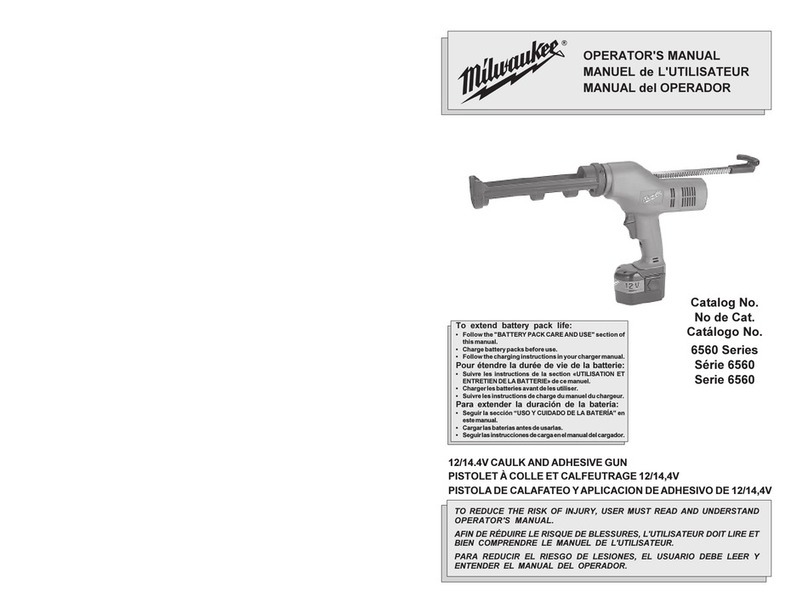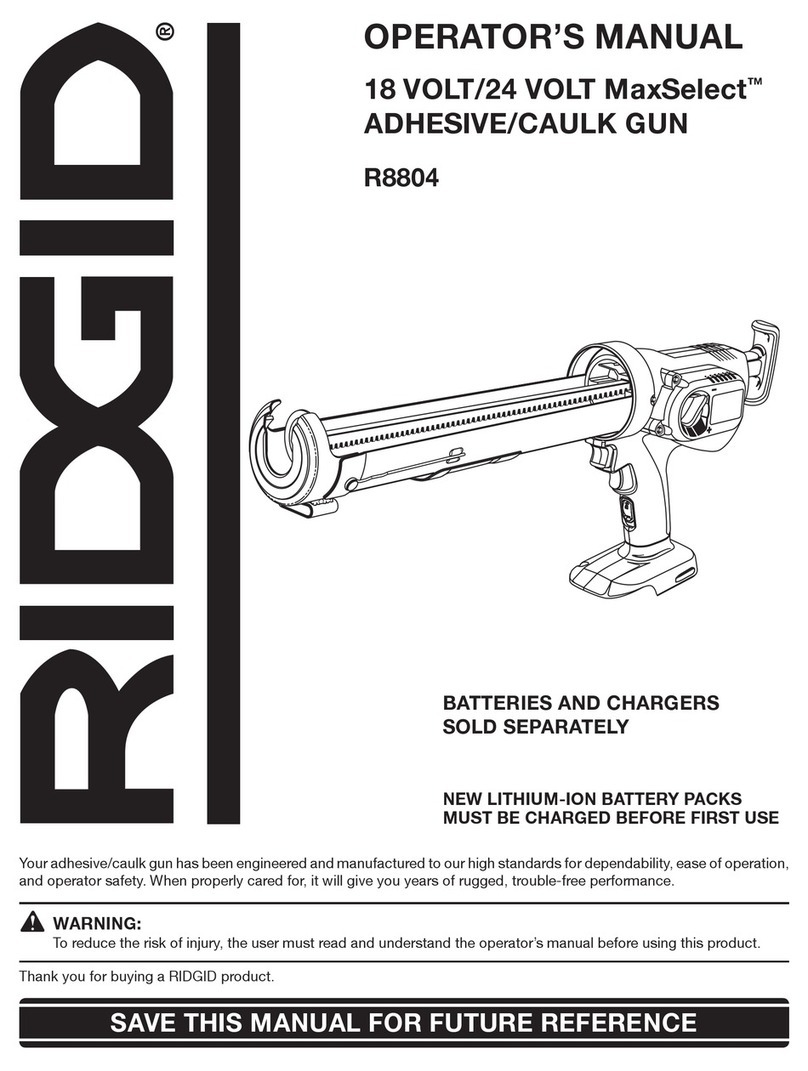8ENGLISH
FUNCTIONAL
DESCRIPTION
CAUTION: Always be sure that the tool is
switched off and the battery cartridge is removed
before adjusting or checking function on the tool.
Installing or removing battery
cartridge
CAUTION: Always switch off the tool before
installing or removing of the battery cartridge.
CAUTION: Hold the tool and the battery car-
tridge rmly when installing or removing battery
cartridge. Failure to hold the tool and the battery
cartridgermlymaycausethemtoslipoffyourhands
and result in damage to the tool and battery cartridge
andapersonalinjury.
►Fig.1: 1. Red indicator 2. Button 3. Battery cartridge
Toremovethebatterycartridge,slideitfromthetool
while sliding the button on the front of the cartridge.
Toinstallthebatterycartridge,alignthetongueonthe
battery cartridge with the groove in the housing and slip
itintoplace.Insertitallthewayuntilitlocksinplace
withalittleclick.Ifyoucanseetheredindicatoronthe
upper side of the button, it is not locked completely.
CAUTION: Always install the battery cartridge
fully until the red indicator cannot be seen.Ifnot,
itmayaccidentallyfalloutofthetool,causinginjuryto
you or someone around you.
CAUTION: Do not install the battery cartridge
forcibly.Ifthecartridgedoesnotslideineasily,itis
not being inserted correctly.
Battery protection system
Thetoolisequippedwithabatteryprotectionsystem.
Thissystemautomaticallycutsoffpowertothemotorto
extend battery life.
Thetoolwillautomaticallystopduringoperationifthe
tool and/or battery are placed under one of the following
conditions:
Overloaded:
Thetoolisoperatedinamannerthatcausesittodraw
an abnormally high current.
Inthissituation,turnthetooloffandstoptheapplication
thatcausedthetooltobecomeoverloaded.Thenturn
the tool on to restart.
Ifthetooldoesnotstart,thebatteryisoverheated.In
this situation, let the battery cool before turning the tool
on again.
Low battery voltage:
Theremainingbatterycapacityistoolowandthetool
willnotoperate.Ifyouturnthetoolon,themotorruns
againbutstopssoon.Inthissituation,removeand
recharge the battery.
Indicating the remaining battery
capacity
Only for battery cartridges with the indicator
►Fig.2: 1.Indicatorlamps2. Check button
Press the check button on the battery cartridge to indi-
catetheremainingbatterycapacity.Theindicatorlamps
light up for a few seconds.
Indicator lamps Remaining
capacity
Lighted Off
75%to100%
50%to75%
25%to50%
0%to25%
NOTE: Depending on the conditions of use and the
ambient temperature, the indication may differ slightly
from the actual capacity.
Switch action
WARNING: Before installing the battery car-
tridge into the tool, always check to see that the
switch trigger actuates properly and returns to
the "OFF" position when released.
►Fig.3: 1. Switch trigger 2.Trigger-lockbutton
Topreventtheswitchtriggerfromaccidentallypulled,
the trigger-lock button is provided.
Tostartthetool,depressthetrigger-lockbuttonfromA
sideandpulltheswitchtrigger.Toolspeedisincreased
by increasing pressure on the switch trigger. Release
the switch trigger to stop.
After use, press in the trigger-lock button from B side.
Speed adjusting dial
►Fig.4: 1.Speedadjustingdial
Thetoolspeedcanbeadjustedbyturningthespeed
adjustingdial.Youcangetthehighestspeedat5and
the lowest speed at 1.
NOTICE: Do not turn the dial quickly when the
tool is working.
NOTICE: Depending on the type and conditions
of caulking material, it may not be fed at low
speed. In this case, set the speed adjusting dial
higher.
NOTICE: When changing the speed dial from "5"
to "1", turn the dial counterclockwise. Do not turn
the dial clockwise forcibly.
